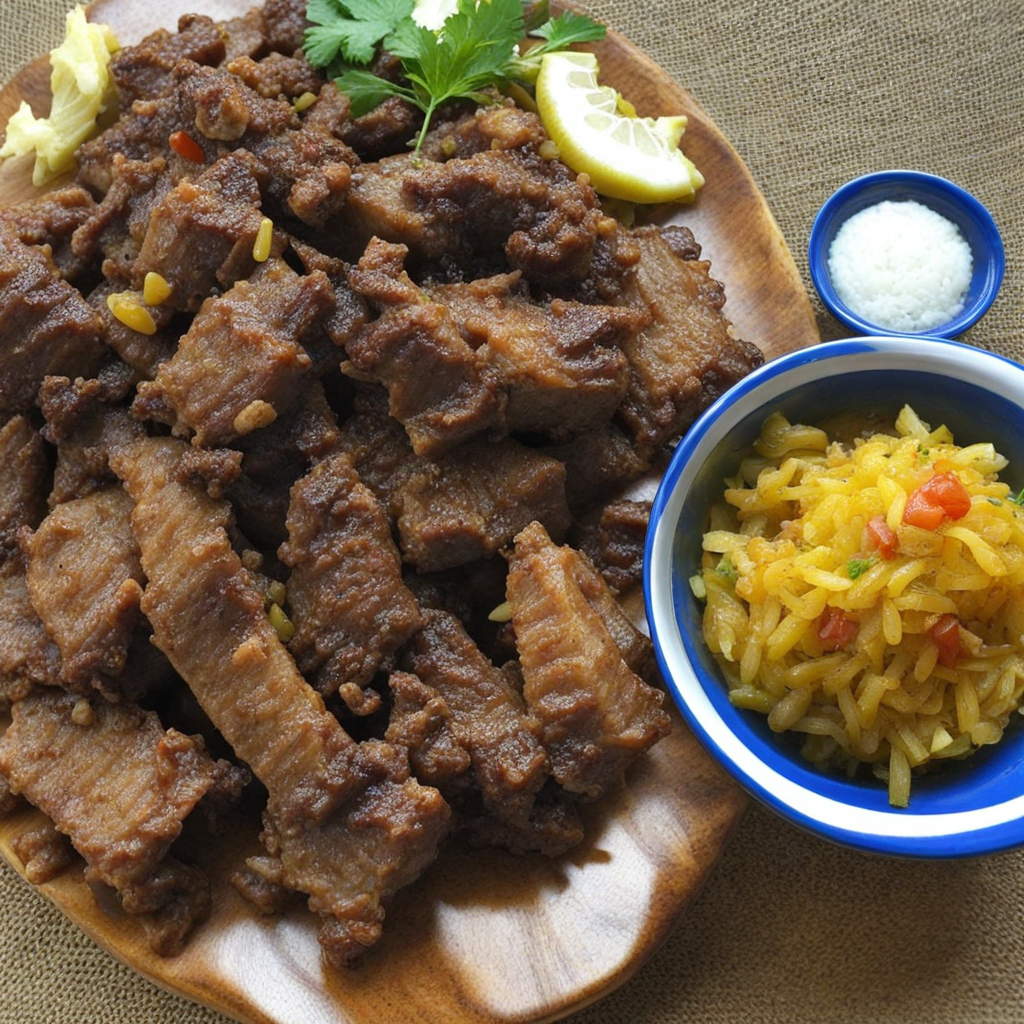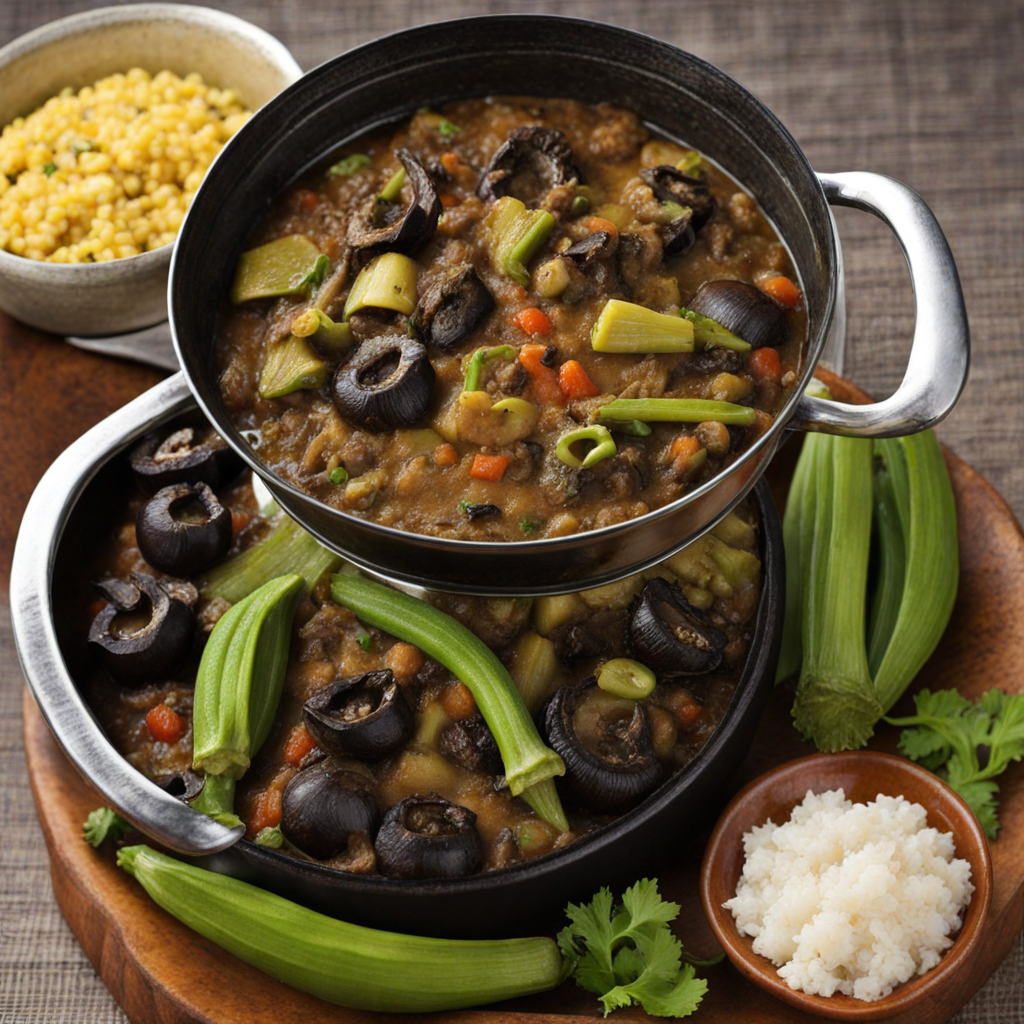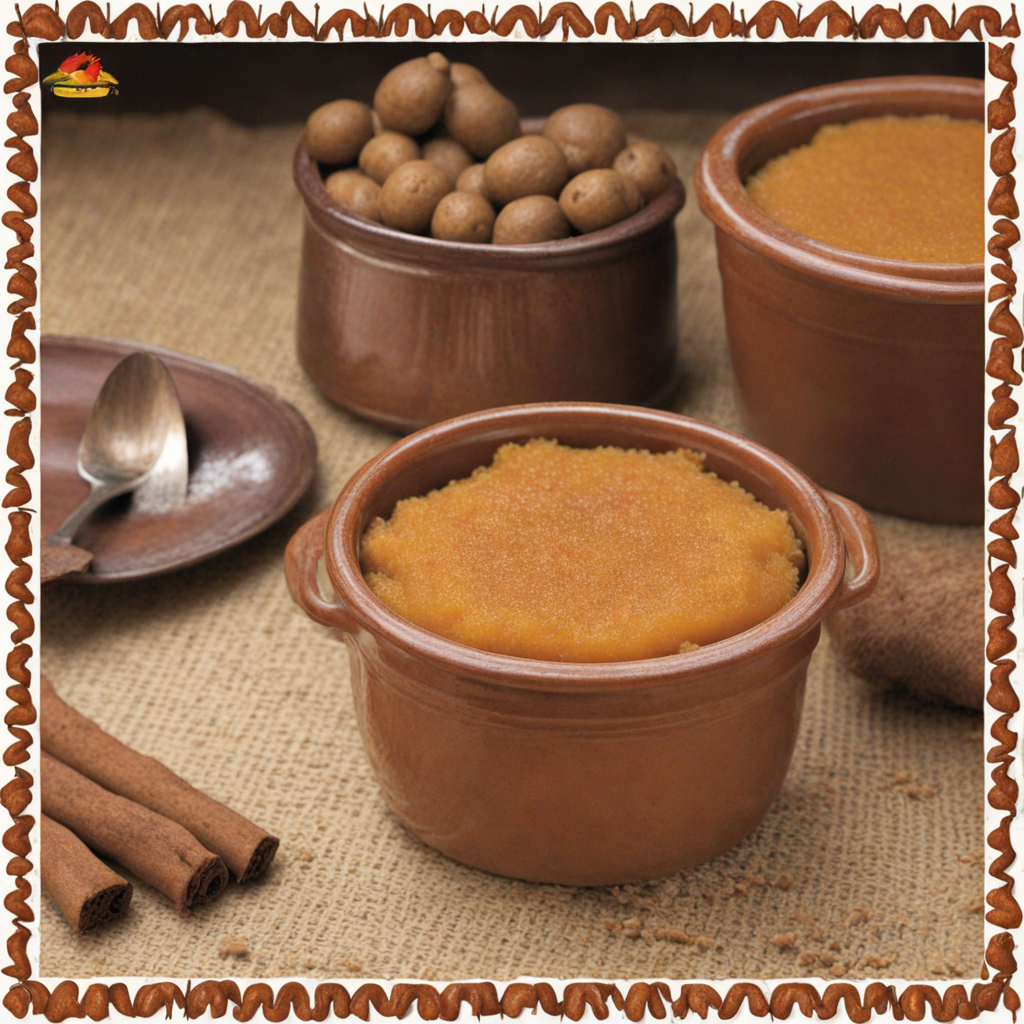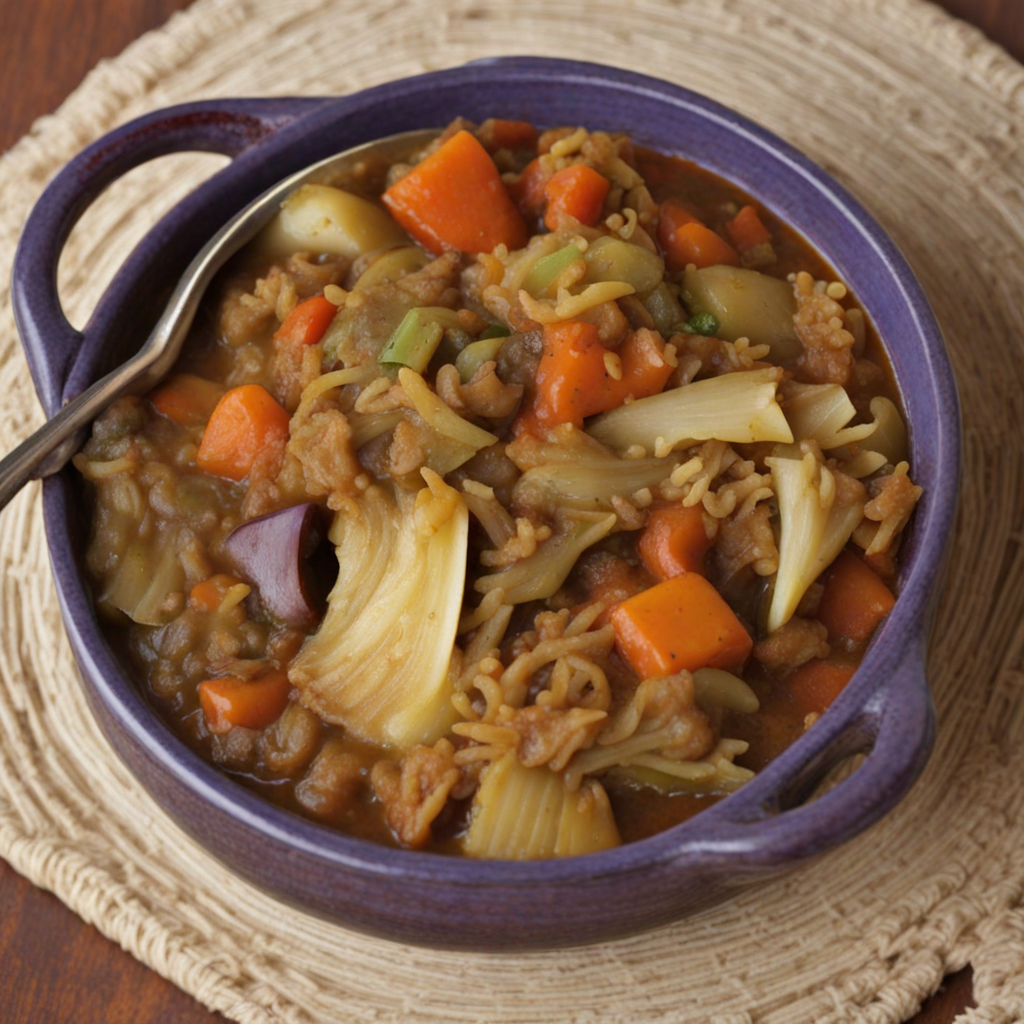Tassot Cabrit
Tassot Cabrit is a tantalizing dish from Haiti that showcases the island's rich culinary heritage. It features marinated goat meat, which is often considered a delicacy in many Caribbean cultures. The goat is typically cut into bite-sized pieces and marinated in a vibrant blend of spices, including thyme, garlic, and scotch bonnet peppers, which infuse it with a depth of flavor that is both spicy and aromatic. This marination process allows the meat to become tender and absorb the essence of the spices, creating a mouthwatering experience that captures the essence of Haitian cooking. Once marinated, the goat is either fried or slow-cooked until it reaches a perfect golden-brown crust, which adds a delightful crunch to each bite. The frying process not only enhances the texture but also locks in the savory juices of the meat, making it irresistibly succulent. Traditionally, Tassot Cabrit is served with a side of rice and beans or fried plantains, which complement the rich flavors of the goat and provide a satisfying balance to the dish. The vibrant colors and enticing aromas make it a feast for the senses, inviting those who partake to savor each mouthful. Tassot Cabrit is more than just a meal; it is a celebration of Haitian culture and community. Often enjoyed during festive occasions and family gatherings, this dish brings people together to share in the joy of good food and heartfelt conversation. The combination of the bold spices, tender meat, and accompanying sides creates a truly unique taste experience that embodies the spirit of Haiti’s culinary traditions. For anyone looking to discover new flavors, Tassot Cabrit promises an adventure that is both delicious and memorable.
How It Became This Dish
Tassot Cabrit: A Culinary Journey Through Haiti’s History and Culture Tassot Cabrit, a traditional Haitian dish, is more than just a culinary delight; it is a vibrant symbol of the rich tapestry of Haiti's history, culture, and resilience. This dish, made from fried goat meat, encapsulates the island's complex heritage, blending indigenous, African, and European influences that have shaped Haiti's gastronomic landscape. Origins of Tassot Cabrit The origins of Tassot Cabrit can be traced back to the Taino, the indigenous people of the island before European colonization. While goat was not native to the Caribbean, the arrival of Spanish colonizers in the late 15th century brought various livestock, including goats, to the region. Goats quickly adapted to Haiti's mountainous terrain and became a staple source of protein for the local population. The Taino people, along with the enslaved Africans who were forcibly brought to the island, began to incorporate goat into their diets, leading to the development of various culinary traditions. During the brutal years of slavery in Haiti, African culinary practices mixed with the ingredients and techniques introduced by the French colonialists. This fusion not only preserved elements of African heritage but also allowed for innovation in the kitchen, resulting in a vibrant and diverse food culture. Tassot, which means "to dry" or "to preserve," reflects the survival strategies of enslaved people who had to make the most of limited resources. The dish emerged as a way to utilize goat meat, which could be seasoned and dried, then fried to create a flavorful and satisfying meal. Cultural Significance Tassot Cabrit is deeply ingrained in Haitian culture and is often prepared for special occasions, family gatherings, and religious celebrations. The dish is typically served with rice and beans, fried plantains, or pikliz—a spicy pickled vegetable condiment that adds a burst of flavor and freshness. It symbolizes not only sustenance but also the communal aspect of Haitian life, where food plays a central role in bringing families and communities together. The preparation of Tassot Cabrit is a communal activity, often involving family members who gather to season and fry the meat, share stories, and celebrate their heritage. This act of cooking and eating together fosters a sense of belonging and continuity, allowing generations to connect over shared culinary practices. The dish is often associated with the voodoo religion, where food serves as an offering to spirits, reinforcing the idea that meals are sacred moments of connection. Development Over Time As Haiti's history unfolded, so did the evolution of Tassot Cabrit. The 19th century marked a significant period for the country, as it struggled for independence after the successful slave revolt that led to the establishment of the first Black republic in 1804. The newfound freedom brought about changes in agricultural practices, with goat farming becoming more prominent. This increased availability of goat meat contributed to the rising popularity of dishes like Tassot Cabrit, which began to be seen as a national dish. In the 20th century, particularly during the Duvalier dictatorship from the 1950s to the 1980s, Haiti faced economic hardships and political turmoil. Despite these challenges, culinary traditions remained a source of pride and resilience. Tassot Cabrit became a symbol of national identity and unity, often served at celebrations of Haitian culture, including music festivals and national holidays. The dish’s popularity spread beyond the borders of Haiti, as Haitian immigrants carried their culinary traditions with them, introducing Tassot Cabrit to new audiences. Today, Tassot Cabrit is a beloved dish not only in Haiti but also in Haitian communities worldwide. Restaurants specializing in Haitian cuisine often feature it as a signature offering, showcasing the flavors and cooking techniques that have been passed down through generations. The dish has also found its way into the fusion food movement, where chefs experiment with traditional recipes, incorporating modern techniques and global flavors while respecting the roots of Haitian cooking. Modern Interpretations and Global Influences In contemporary culinary scenes, Tassot Cabrit has been reimagined and celebrated in various ways. Chefs both in Haiti and the diaspora are exploring innovative methods of preparation, such as slow-cooking and sous-vide techniques, while still honoring the traditional flavors that define the dish. Additionally, the rise of social media has allowed for the sharing of recipes and cooking techniques, further enhancing the dish's visibility and popularity. Moreover, as conversations around food sovereignty and cultural appreciation grow, Tassot Cabrit serves as a reminder of the importance of preserving culinary heritage. Many Haitian chefs and home cooks emphasize the use of local, sustainable ingredients to create an authentic experience, drawing attention to the agricultural practices that have sustained the community for centuries. Conclusion Tassot Cabrit is more than just a meal; it is a narrative of a people who have endured and thrived despite adversities. It reflects the resilience and creativity of the Haitian spirit and serves as a celebration of cultural heritage. As the world continues to embrace global cuisines, Tassot Cabrit stands as a testament to the power of food as a unifying force, connecting people to their roots and to one another. In every bite of this savory dish, one can taste the history of a nation, the blending of cultures, and the enduring legacy of a community that continues to cherish its culinary traditions. As Haiti looks to the future, Tassot Cabrit remains a cherished symbol of identity, resilience, and the joy of shared meals—an enduring flavor of heritage that resonates in the heart of every Haitian.
You may like
Discover local flavors from Haiti







